D.C. Has Made Remarkable Progress Toward Ending Chronic Homelessness. Will It Continue?
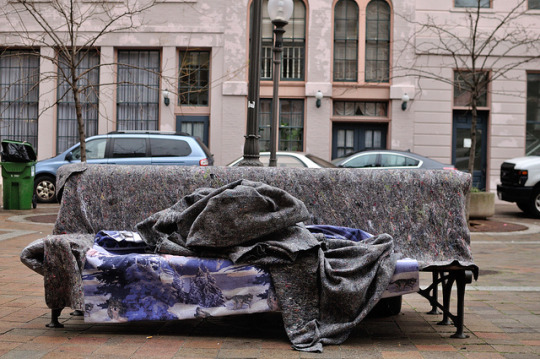
In 2008, the equation for help was reversed. Instead of placing a raft of requirements before providing shelter, D.C. adopted a “housing first” policy, following a model pioneered by the non-profit Pathways to Housing.
As the District approaches a decade of implementing housing first policies, the number of chronically homeless people, defined as being homeless for at least one year or four times in the past three years and having a mental or physical disability, has declined by nearly 33 percent.
Can the city continue to find homes for them as family homelessness remains a priority, as critical federal support is on the chopping block, as housing becomes increasingly expensive?
By Rachel Sadon | Read the full article

Without Leadership at HUD, DC’s Anti-Homelessness Officials Have No Idea What’s Coming
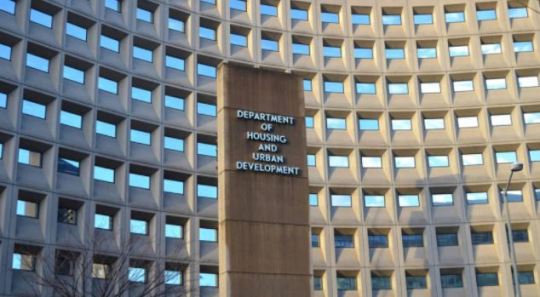
When Kristy Greenwalt needs something from from the federal government these days, it’s not always clear who she’s supposed to call on. Greenwalt, the executive director of the District’s Interagency Council on Homelessness, is one of many city-government and nonprofit leaders whose jobs became much more difficult and murky on January 20, when one administration that made progressive strides on low-income housing and homelessness was replaced by one that—so far—seems to have little interest in those issues.
“They don’t really have people who can get policy out the door,” Greenwalt says of the Trump Administration.
By Benjamin Freed | Read the full article

These 10 Graphs Expose D.C.’s Homeless Crisis
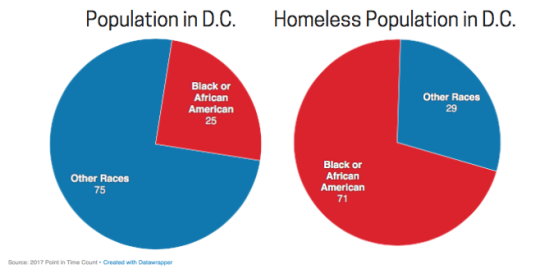
D.C.’s biggest problem lies with its inability to effectively address the increase of families experiencing homelessness. While the national average for individuals in homeless families decreased by 2.6 percent from 2015-2016, D.C.’s average increased by over 34 percent.
From pre-K to college, students across the country are also experiencing large degrees of homelessness. There are currently enough homeless American children to fill American University’s enrollment 10 times.
By Sydney Covitz | Read the full article

On Three Decades of Homeless Advocacy—and the Challenges Ahead
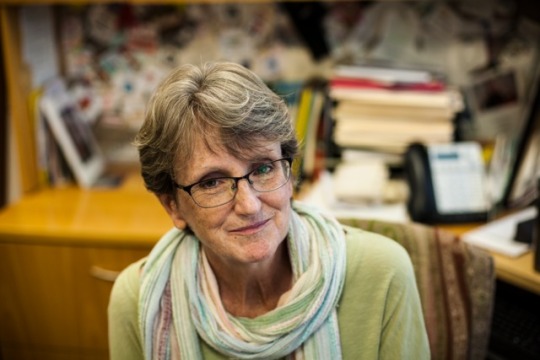
Despite nearly 7,500 D.C. residents counted as homeless this year, a lack of affordable housing on both sides of the Anacostia River, and tent cities still being broken down by the District, Patricia Mullahy Fugere chooses to be hopeful about eradicating homelessness. She has helmed the Washington Legal Clinic for the Homeless since 1991, after she co-founded the nonprofit organization and served as its board president in the mid-1980s. Fugere sat down with City Paper last week to talk about the state of homelessness in D.C., what officials can be doing to alleviate major pressures on the shelter system, and how the District can lift up those in need.
By Andrew Giambrone | Read the full article

Asking the people who have lived through it
Street Sense vendors on how we can end homelessness.
By Keirsten Ownes | Watch more videos

Nearly Half of DC’s Homeless Youth are LGBTQ, and They’re Not Getting the Support They Need
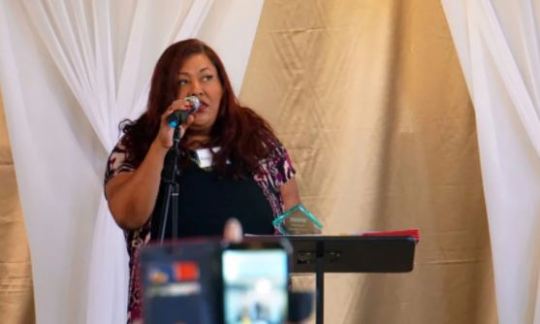
“It’s like society punishes [these homeless LGBT youth] in every way possible for being different. The punishment is no jobs, no access to resources, no beds,” says Ruby Corado, executive director of LGBTQ homeless youth organization Casa Ruby. “A big part of my job is to restore their pride and dignity. It’s to tell them—when the world tells them they are demons—that ‘baby, they’re wrong.’”
The biggest cause of homelessness, regardless of sexual orientation, is poverty. Contrary to popular beliefs, LGBTQ people are poorer than the straight population; they’re also more likely to be female and people of color. And despite DC’s reputation as one of the most socially progressive cities in the United States, tales of discrimination against homeless trans youth abound beneath the surface.
By Julie Strupp | Read the full article

D.C. Council Cuts $2 Million From Already Underfunded Emergency Rental Assistance
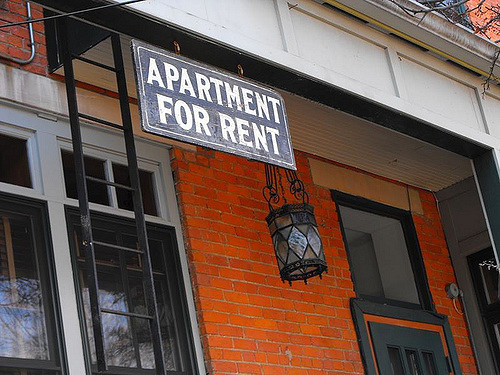
The final vote on the District’s Fiscal Year 2018 budget cut funds for the Emergency Rental Assistance Program by $2 million — a 21 percent reduction from Fiscal Year 2017. This is $750,000 less than the cut proposed by Mayor Bowser, but ERAP’s insufficient funding has been an issue since the program started in 2007. Although the city council has approved more funding for the Homelessness Prevention Rapid Rehousing Program that began in 2015, this should not be seen as an alternative to emergency rental assistance, according to Max Tipping of the Washington Legal Clinic for the Homeless.
By Dorothy Hastings | Read the full article

‘Just leave me alone and I’ll make it’: D.C. plays Whack-a-Mole with homeless encampments
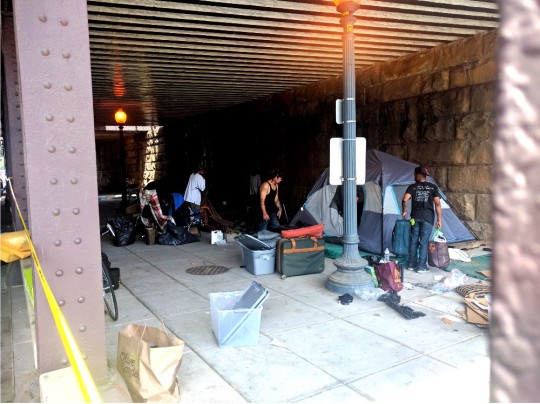
The year he’d spent hunkered down under the dark stone rail bridge near Union Station had been different from the previous 10 Willie has spent on the streets of Virginia, Colorado, and the nation’s capital. He used that new stability to start taking classes toward a barber’s certificate. His tent isn’t much — none of them are — but the sheltered site and steady home-base have been the platform he needed to be able to make it to class regularly, keep appointments with caseworkers and friends who hire him for odds jobs, and spend time here and there with his kids.
The city clean-up threatened to fling Willie’s life back into chaos.
By Alan Pyke | Read the full story

Back On My Feet D.C. Is Helping People Outrun Homelessness
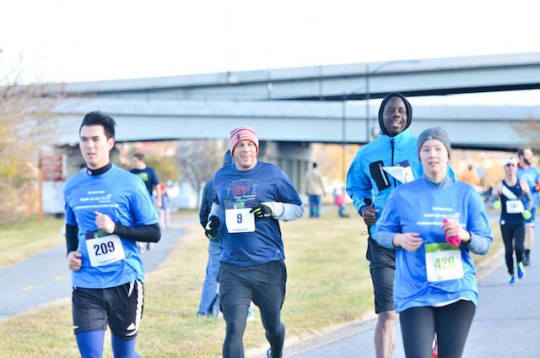
The motley and slightly under-caffeinated crew offers a range in demographics. On average, they’re probably in their 20s to mid-50s. Any gender. Any fitness level. They’re about a 40/60 split between Back on My Feet members—people who are currently homeless and residing in one of four transitional housing facilities from across the district—and volunteers, who come to run from the surrounding neighborhood.
All of us are awake. All of us are ready to run.
By Mikka Macdonald | Read the full article

After life on the street, former cop helps humanize the homeless for D.C. recruits
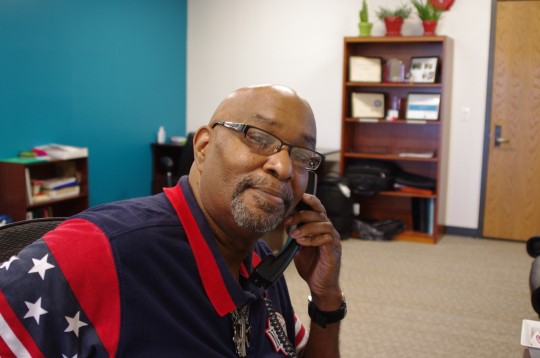
For the past five years, nearly every recruit to pass through the Metropolitan Police Department’s training academy has heard Alan Banks talk about the six years he spent homeless as part of their training on how to interact with the District’s homeless residents.
The trainings are designed to show officers that the homeless are people just like them, Banks told ThinkProgress. But Banks also shares a special connection with the recruits: Before he was homeless, he spent decades in federal law enforcement.
By Joshua Eaton | Read the full article

After a Childhood Brush With Homelessness, She Used Her Birthday to Reach Out
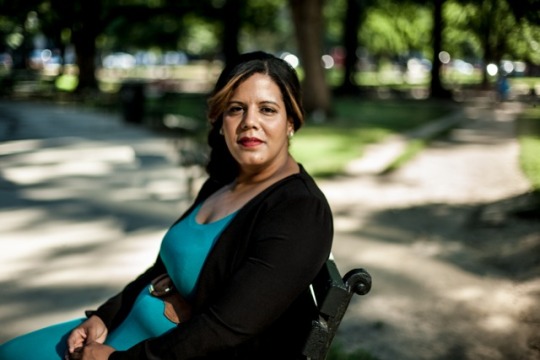
Dania Matos was a teenager growing up in New Jersey when the sheriff came to her family’s front door and explained that they would have to vacate the premises immediately. Matos saw distress on her mother’s face, and promptly began to bargain with the officer. She spilled out their story—she had a younger brother and sister in school, and her mom was dealing with the aftermath of a divorce.
“That sheriff could have easily dismissed me,” she says. “But he looked me in my eye and said, ‘OK, I’m going to give you a few hours’ in one of the worst situations ever. That meant a lot. So I try to pay that forward every day,” Matos says.
By Quintin J. Simons | Read the full article

In DC, Some Who Are Homeless Wait Years For a New ID so They Can Get Their Lives Back
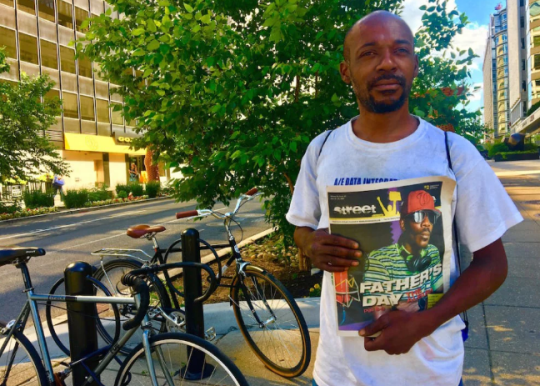
For most people, a lost or stolen form of identification is an easily fixed nuisance, not a calamity. While it might require waiting in a long, pesky line at the DMV and digging out a few other documents, such items can usually be easily replaced.
The process is not as simple, however, for the roughly 8,000 homeless people living in DC. Living on the streets, many people have a hard time keeping track of birth certificates, Social Security cards, or other forms of identification. And without any ID, it’s much harder to access shelter services, receive medical treatment, apply for housing, or find work.
“Any of the possible avenues out of homelessness, you’re going to need ID,” says Bob Glennon, the clinical director at Miriam’s Kitchen, a homeless shelter in the city.
By Courtney Vinopal | Read the full article

D.C. General residents don’t share critics’ concerns about new Ward 3 family shelter
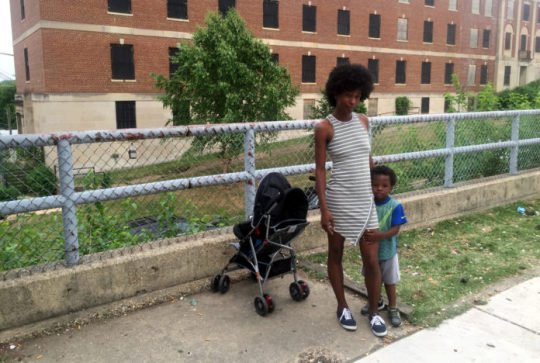
Neighbors concerns’ for the shelter’s future residents are also numerous, if hypothetical. The shelter’s proximity to the police station at 3320 Idaho Ave. NW raises worries that families will feel like they’re being monitored. The dearth of affordable restaurants in the area could prove alienating to residents without substantial means. And the distance from the nearest Metro station might be inconvenient, especially for parents who need easy access to a job elsewhere in the city.
But for parents like 28-year-old D.C. native Jessica Odom — who’s lived in the city’s existing family homeless shelter at D.C. General since April — some of those prospects sound more like opportunities than red flags. Living next to a police station, for instance, would make her feel safer than she does now, she said.
By Mark Lieberman | Read the full article

Senator Al Franken on Ending Homelessness
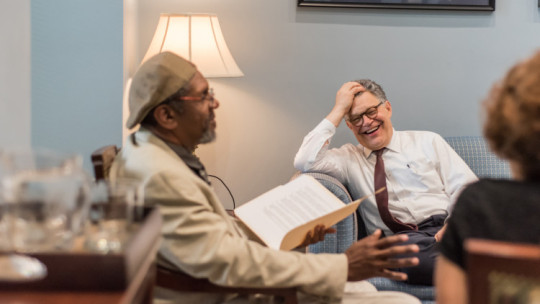
Senator Al Franken sat down with Street Sense vendor Ken Martin to discuss homelessness, gentrification and Bill Maher.
“It starts very early. You have to attack it in different ways.”
By Ken Martin & Roberta Haber | Read the full article

Homeless Kids Caper Freely at a Northeast D.C. Hotel

Tucked between train tracks and freeway-like New York Avenue NE, where vehicles drive fast and sidewalks are dangerously narrow, the Quality Inn & Suites looks like a forgotten slice of D.C. from the outside.
Inside, dozens of homeless families occupy this hotel-turned-shelter.
In the hotel’s parking lot on a Monday evening, a small boy throws a near-spiral with a soft football and stands triumphant. A few of his peers—black boys and girls ages three to seven—dart across the pavement with one another and adult volunteers from the Homeless Children’s Playtime Project, a nonprofit group founded in 2003 that provides play nights at the Quality Inn. They’ve been doing it since January and plan to add a Wednesday evening playtime for toddlers.
By Andrew Giambrone | Read the full article

Diversion Program Keeps Kids out of Prison and off the Streets
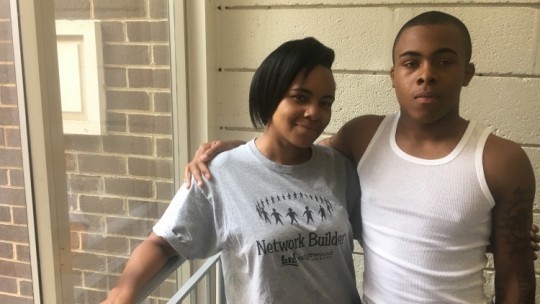
Elijah Payne says June 24 was the best day of his life.
On that Saturday, he graduated from the Capital Guardian Youth Challenge Academy, a highly structured, quasi-military program for at-risk youth. The 16-year-old entered the academy after years of poor school attendance and impulsive behavior.
While the first few weeks were tough, Payne said part of him didn’t want to come home by graduation. Throughout his time in the academy, his mindset and behavior improved. His mother, Cinquetta Williams, said he’s become more affectionate, often coming by the house just to give her a hug.
By Tom Coulter | Read the full article

D.C. Evicts Tent Community Under NoMa Metro Bridge
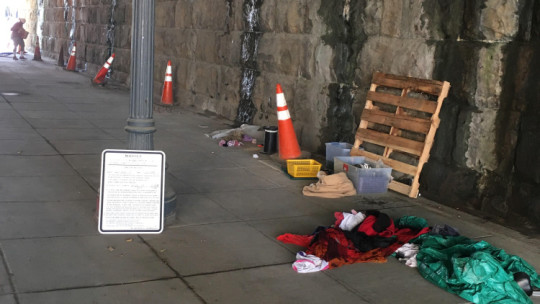
Quick work was made of the cleanup; by 10:30 the majority of tents had been taken down. Many of those evicted from the area around the 2nd Street bridge picked up and moved to a new encampment three blocks away in front of an empty building in the vicinity of M, N and 3rd Streets Northeast.
On the next day, June 21, a representative of NoMa Business Improvement District, a police officer, and the owner of the vacant building arrived to inform those who had moved to the new encampment that they were required to be gone by 9 am the following day or the police would force them out.
By Maren Adler | Read the full article

Homeless LGBTQ youth struggle to escape harassment at shelters

LGBTQ youth often run away from or are pushed out of their homes by unaccepting families, but too often, long-term placements and homeless shelters don’t offer a better alternative. Instead, they become just another place where LGBTQ youth are harassed, sexually assaulted, and denied recognition of their gender. To make matters worse, few states have effective policies that recognize their particular needs, and federal rules protecting this population are in danger.
By Casey Quinlan | Read the full article

The D.C. Council Weighs Stricter Requirements for Shelter Access
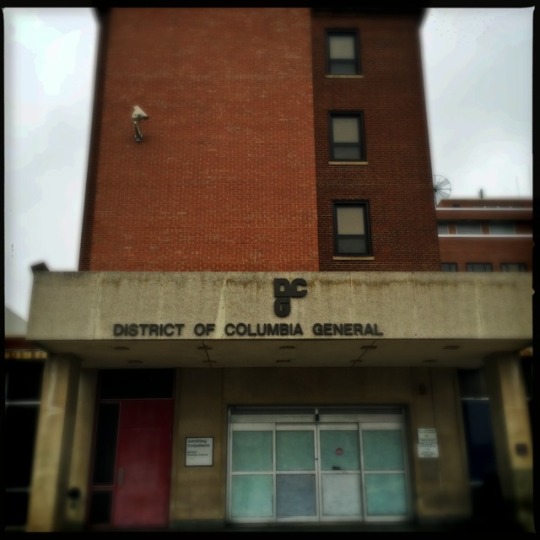
A coalition of advocates and District officials are divided over proposed reforms to D.C.’s shelter system, with city lawmakers expected to mark up and vote on the reforms in the coming months.
For the first time since 2005, D.C. is pushing for sweeping changes to the laws that govern its homeless services. This time around, they are facing the extra strain of a deeper affordable housing crisis.
By Andrew Giambrone | Read the full article

District Government Responds to First Heat Emergency of 2017
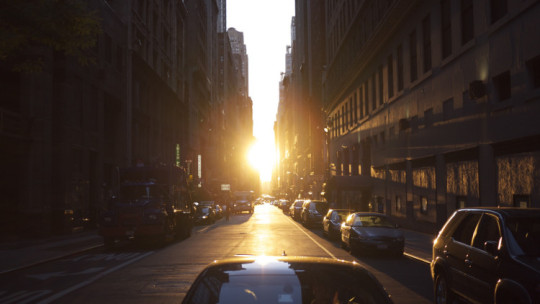
The D.C. Homeland Security and Emergency Management Agency declared the first heat emergency of 2017 on Tuesday, June 13, followed by two more later in the week. The heat index climbed as high as 97 degrees and stayed there for nearly 10 hours. During that time, the HSEMA 2017 Heat Emergency Plan was fully operational.
Many members of the homeless community are still unaware of the resources available to them. Employees of each of seven the cooling centers catering to people experiencing homelessness reported little to no usage. “That’s good to know,” Joe Malual said when told about the existence of cooling centers. “We need places to go when it gets hot.” Malual was waiting to access services at Miriam’s Kitchen in Foggy Bottom.
By Maren Adler | Read the full article




